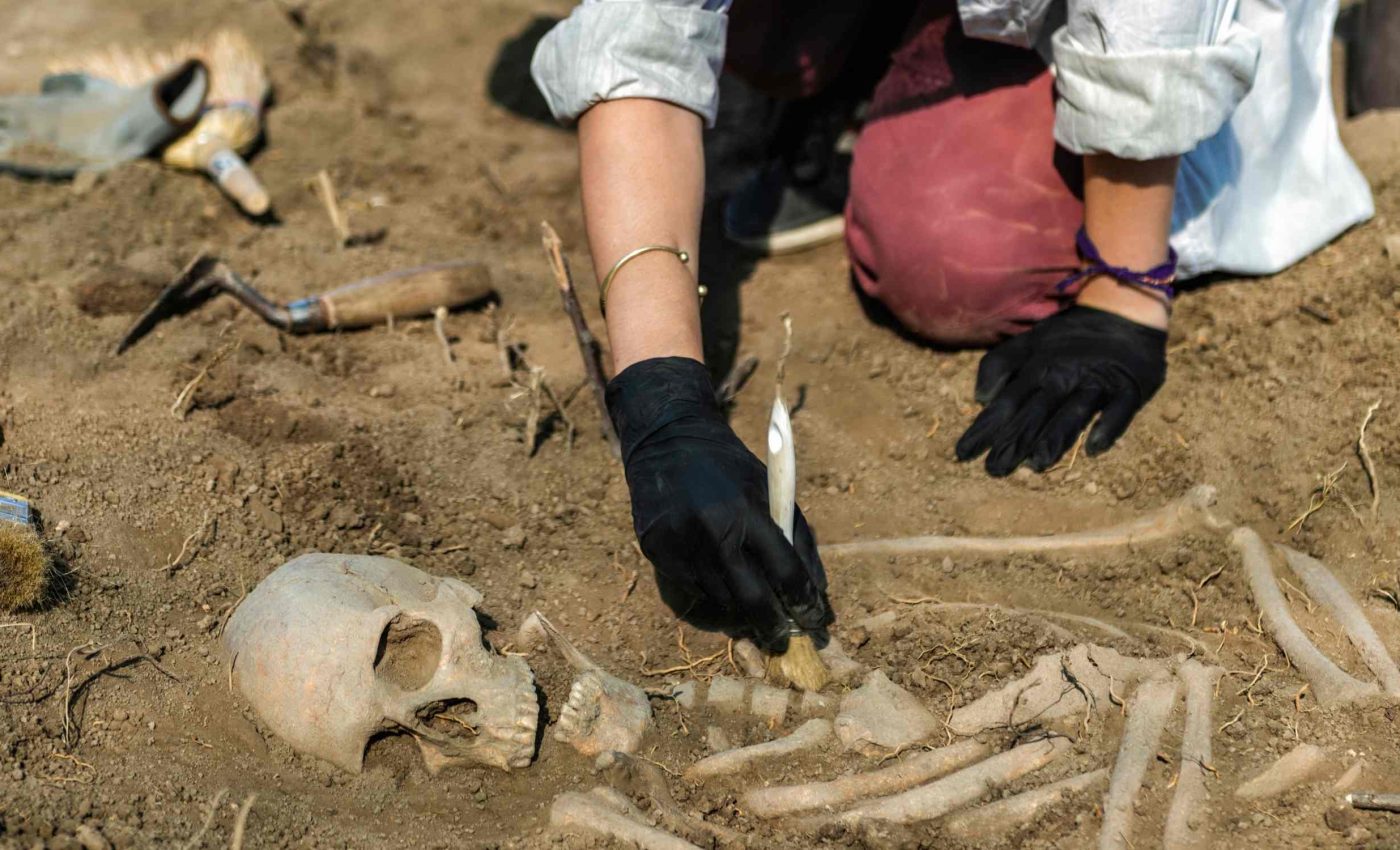
Scientists decipher the genetic history of 400 medieval skeletons
Scientists have extracted genetic information from 400 medieval burials that date between the eighth and eighteenth centuries. Their work, which represents a large-scale analysis of DNA from medieval times, has helped clarify how populations in different regions have changed over hundreds of years.
A few surprising results emerged, including details of early migrations and the unexpected detection of disease in fourteenth-century contexts. The findings show how genetic research can uncover hidden chapters of history.
How it all came together
Researchers were drawn to the main square of Sint-Truiden, where excavations uncovered about 3,000 skeletons. Only a fraction of them were tested, but the study is still regarded as the largest medieval DNA analysis in the Low Countries.
At first, the scientists expected to see some mixture of genetic backgrounds, though they did not realize how much the earliest skeletons would stand out.
From the earliest medieval burials, experts identified a handful of individuals whose profiles matched populations from Scotland or Ireland.
This raised questions about migration routes and settlement patterns during the early Middle Ages, since many historians believed only short-distance mobility was common in the region at that time.
Genetic changes in a medieval population
Overall, there was a decline in genetic diversity in Sint-Truiden after the eleventh century, with the local population becoming more homogeneous.
One reason may be fewer long-distance travelers settling there after the early medieval era. Another factor could be the shift toward local families intermarrying, producing a more uniform genetic signature.
Researchers also noted distinct burial zones. People buried closer to the abbey area carried a slightly higher proportion of ancestry from Gaulish sources, whereas others had more mixed heritage.
Differences in relatedness were detected in some sections of the cemetery, pointing toward separate networks of families or visitors who arrived at various times.
An overlooked chapter of plague
One startling clue was the identification of Yersinia pestis, the plague-causing bacterium. Earlier city records for Sint-Truiden made no mention of plague in the fourteenth century, yet bones revealed molecular traces of that disease in five individuals.
None of them were found in a mass burial, so it appears that they were interred in single graves.
DNA evidence from this medieval genetic analysis demonstrated the bacterium was present despite an absence of historical documents linking Sint-Truiden to the plague.
Given the disease’s deadly impact throughout Europe, the city’s silence on this topic is notable. It highlights how a lack of written records can mask events that had real, if invisible, consequences for communities.
Medieval genetics offer unique insights
Researchers observed that the cemetery caught the final remains of city residents from all walks of life. Despite a large excavation sample, only a modest number of pairs were close relatives.
Instead, the data suggest Sint-Truiden’s population drew on a broad network of newcomers alongside longer-standing locals.
The presence of individuals from Scottish or Irish origins aligns with ideas about medieval pilgrimages or specialized tradespeople making their way across the Low Countries.
Meanwhile, the local population likely carried a blend of Germanic and Gaulish ancestors, a balance that remained stable over the centuries.
Human diversity and historical records
Findings hint that medieval societies were more cosmopolitan than once believed. Genetic data show how cultural exchanges may have spread across sea routes and land corridors.
Scientists see parallels in other parts of northwestern Europe, where early medieval samples can be more varied than later populations in the same region.
The researchers also examined notable traits, such as those affecting vitamin D levels.
Differences were observed between people with different ancestral backgrounds, though these details point to long-term processes instead of abrupt changes. Such observations match other paleogenomic studies from medieval Europe.
Why it matters today
Ancient DNA studies offer a window onto health, migration, and local identity. Although later centuries saw more detailed written records, earlier periods remain murky.
Such a large dataset from one city gives historians and anthropologists a clearer view of everyday life, disease exposure, and social patterns.
For Sint-Truiden, the revelation that plague existed in the fourteenth century underscores the limits of written evidence. It shows that archaeological science can fill gaps left behind by incomplete archives.
Because these skeletons span many generations, they serve as a living timeline that captures snapshots of genetic trends across the medieval era.
Learning from medieval population genetics
Scientists believe that more studies, both in Belgium and elsewhere, could challenge assumptions of isolated medieval communities.
As labs refine methods to extract DNA from older bones, they expect to learn more about ancient mobility and cross-border interactions.
These ideas can reshape how we understand town development, family ties, and the interplay between genetics and culture.
This research also highlights how population-level changes happen slowly. By following genetic clues, future work might link certain traits to the mixing of Gaulish and Germanic origins.
Combining genetic data with archaeology and archival material continues to shape a deeper perspective on Europe’s past.
The study is published in Genome Biology.
—–
Like what you read? Subscribe to our newsletter for engaging articles, exclusive content, and the latest updates.
Check us out on EarthSnap, a free app brought to you by Eric Ralls and Earth.com.
—–













